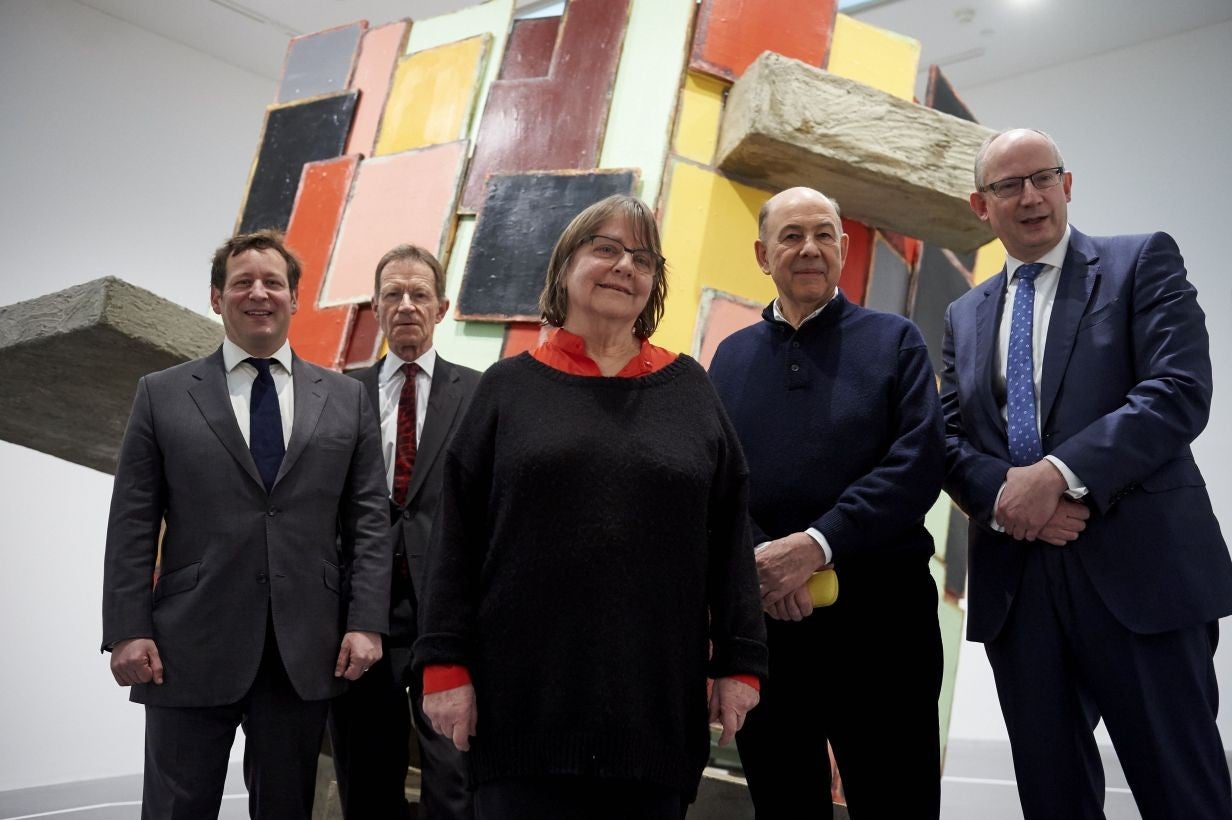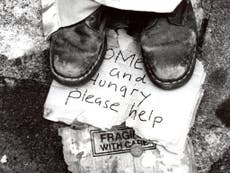Phyllida Barlow and the art of making it up as you go along
If we are locked into goals or plans, there is no space for invention

It was one of those mornings in which head lice had to be dealt with. Hence I was in the bathroom, listening to the Today programme while removing hundreds of the blighters from the head of one of my offspring. During the procedure, John Humphrys – who sometimes, but not always, gives art and artists a hard time – introduced the sculptor Phyllida Barlow, who will represent the UK in the British Pavilion at this year’s Venice Biennale. He suggested, in a nice way, that Barlow’s work looked a bit like a perilously balanced pile of discarded rubbish, and asked her whether its seeming fragility was a metaphor for life.
“I think the metaphor has grown,” responded Barlow, who, at 71, has been a formative influence on successive generations of artists. “I am one of those artists who probably doesn’t quite know what my work is about at the outset, but begins to discover itself as I make it.”
As I combed out successive generations of head lice, I thought about this fascinating notion. She didn’t start with a metaphor. She didn’t actually start knowing what the artwork was going to be about, or indeed how it was going to be. How often do we begin a piece of work with no idea of what it is going to do or say, and no notion of how it is going to end?
As I write, I’m not quite sure how this column will end – but I know that after around 750 words, it will have ended. I know what the basic structure of it will be, and I have a reasonably good idea what I am going to say. Indeed, every time I start to write a piece, my position is the same. Even with things I invent.
Last weekend, at The Independent Bath Literature Festival, I was asked what was most surprising about writing fiction. “Having it all work out in the end,” I said. It’s true: I wrote a novel last year and people have remarked on how everything came to a (hopefully satisfying) conclusion. Had I planned it? Well, I hadn’t prepared a chapter-by-chapter breakdown, as many novelists do, but I did know the main arc of the story (and that nobody was going to die). I hadn’t simply begun by switching on the computer and assembling some interesting sentences, as Barlow seems to do with bits of wood.
Yet perhaps more of us should adopt Barlow’s technique, in life as in writing or art. It is tempting to consider our lives a bit like an 80-year biopic, all plotted and planned before the director even shoots the first frame. We actively encourage our children to prepare for life this way. Kids must make their GCSE choices at the age of 14, which inexorably lead on to A-level choices, and hence (for some people) a degree and the shape and direction of your life.
And if the first plan doesn’t work out, there is a fall-back plan. Any other approach is simply too terrifying to consider. Even artists are not encouraged to discover what their work is about as it is proceeding, like Barlow. Art students are given advice about how to get an agent and a BBC4 series nailed down before they even have their first show.
A plan, at all costs, is the thing – and if it is not adhered to, you are at best a hippie, at worst a failure.
We all admire Michael Heseltine, who once famously plotted his key ambitions on the back of an envelope. The fact that it didn’t quite lead to 10 Downing Street never seems to bother anyone; we respect his vision, the fact he was working towards his own set of goals. Being “goal-oriented” is a praiseworthy thing to be. Great if you are training for the London Marathon, but is this the best way of envisaging an 80‑year life span?
For if we are locked into goals and plans, and have plotted our life with meticulous care, there is no space for invention or discovery. There is no way we can step off the conveyor belt without suffering incredible anxiety, because the unplanned life is not a generally admired state.
Ah, but Phyllida Barlow is a universally admired and feted artist, you might say, with work on display at Tate Modern and preparing to show at Venice. It’s all very well for her.
Yes, but, as she cheerfully admitted to Humphrys, her work also falls down quite often. Doesn’t seem to bother her.



Join our commenting forum
Join thought-provoking conversations, follow other Independent readers and see their replies